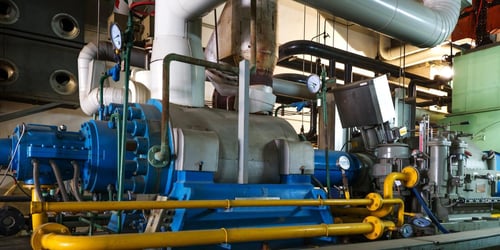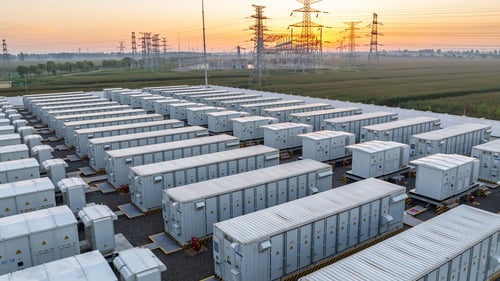How Solar PV Parks are Getting Smarter with Curtailment
.jpg?width=768&name=Article%20Thumbnails%20-%201920x1080%20new%20website%20(33).jpg)
The energy transition is in full swing. That means utilising renewable energy sources as much as possible. But what if that meant using less solar power? It might sound strange. Using less solar power than what is readily available seems like the completely wrong approach. But looking at it more closely, reducing solar power use may not only be necessary, but even profitable for solar PV parks. To explain his we’ll look at:
Jump to:- The Rise of Solar Power in the Netherlands
- The Power of Subsidies
- When to Curtail Solar Power
- How Parks can Profit from Solar Curtailment
The Rise of Solar Power in the Netherlands
Solar parks are scattered all over the Netherlands. In fact, the Dutch were the most active people in the European Union for installing new solar PV by population in 2019. They also had the second-best ratio of 400Wp per inhabitant after Germany. But this high supply of solar power can also lead to many grid imbalances when supply outweighs demand. This causes prices for solar to drop immensely. During the height of the COVID-19 crisis this was a recurring event. More electricity was being generated by the country’s solar PV parks than was needed due to people staying at home. With growing demand for solar, these negative prices are bound to become more common. With this, comes a need for a tangible solution.
The Power of Subsidies
When there is excess electricity, someone has to pay for it to be generated. This usually falls on the solar parks, or the power purchase agreement (PPA) buyer. For every MWh that’s produced, a certain amount of money has to be paid depending on the financing structure of the park. If that’s the case, why do so many solar plants keep on producing power?
Because in the Netherlands, solar parks receive money for every MWh they provide. The Stimulering Duurzame Energieproductie (SDE+) is a subsidy in the Netherlands that is set between €70-110 per MWh for 15 years. For up to 950 hours a year a solar park will get the SDE+ price for energy production, minus a yearly correction index price. This index price differs depending on whether the solar power is used for consumption or delivered to the grid. Nonetheless, it successfully alleviates the problem of excess solar energy in the Netherlands.
When to Curtail Solar Power
Up until now, the focus for solar parks has been on maximising production. Curtailing solar has only been done for maintenance, or for distribution system operators when network capacity is not sufficient. Luckily, the SDE+ regulations can be a good reason to introduce solar curtailment in the Netherlands. According to SDE+ rules, when day-ahead prices are negative for installations larger than 500kW, no subsidy will be given for electricity produced after six consecutive hours. This means that there will be no benefit to producing electricity during those hours, prompting solar parks to stop production. This makes it the perfect opportunity to implement solar curtailment during these times.
How Parks can Profit from Solar Curtailment
Solar parks that realise the potential of solar curtailment also gain access to significant benefits, including:
- Avoiding negative prices
- Managing congestion
- Using solar prices to create revenue
If Dutch solar plants curtail power during high production when no SDE+ is given, they can easily avoid negative day-ahead prices. They can also bid down their production in the country’s automatic frequency restoration reserve (aFRR) market. This is a secondary power reserve that restores grid frequency when activated by the transmission system operator (TSO), Tennet. Solar parks that curtail via aFRR with a positive bid price will be compensated for it, so long as it’s during hours which aren’t subsidised by SDE+. On top of that, since solar parks are active in the day-ahead market, they should also get paid for the electricity sold for that hour on the day-ahead market.
And while solar curtailment can be used to compensate for excess power generation, it can also be used when congestion in a specific region is caused by lower production or increased consumption. This congestion is only preventable through the use of smart solar power management strategies like curtailment. While it might seem counterintuitive to curtail solar power, it can be a vital tool for providing a stable grid for the energy transition.
Other articles you might find interesting
-
 Demand-side flexibility30 September 2020
Demand-side flexibility30 September 2020District Heating Operators: New Revenue From Grid Balancing
Read more -
 Demand-side flexibility30 September 2020
Demand-side flexibility30 September 2020Five Myths About Demand Response, Debunked!
Read more -
 Demand-side flexibility30 September 2020
Demand-side flexibility30 September 2020BESS & Demand Response, What’s the Connection?
Read more -
.jpg?length=500&name=Article%20Thumbnails%20-%201920x1080%20new%20website%20(4).jpg) Demand-side flexibility30 September 2020
Demand-side flexibility30 September 20203 Things to Look for in a Flexibility Service Provider
Read more -
.jpg?length=500&name=Article%20Thumbnails%20-%201920x1080%20new%20website%20(35).jpg) Demand-side flexibility30 September 2020
Demand-side flexibility30 September 2020smartEn Executive Director Michael Villa on the future of energy flexibility in Europe
Read more -
.jpg?length=500&name=Article%20Thumbnails%20-%201920x1080%20new%20website%20(34).jpg) demand response30 September 2020
demand response30 September 2020Getting Europe’s Grids Fit for the 21st Century - Interview With SmartEn’s Executive Director Michael Villa
Read more -
 Demand-side flexibility30 September 2020
Demand-side flexibility30 September 2020Empowering Industry through Energy Flexibility - Q&A with Raphaël Gras
Read more -
 demand response30 September 2020
demand response30 September 2020EU elections: Opportunity or Risk for Demand-Side Flexibility? - Q&A with Mathilde Chareyron
Read more -
.jpg?length=500&name=Article%20Thumbnails%20-%201920x1080%20new%20website%20(5).jpg) Knowledge30 September 2020
Knowledge30 September 2020How to Earn Revenue with Demand Response
Read more -
.jpg?length=500&name=Article%20Thumbnails%20-%201920x1080%20new%20website%20(6).jpg) Demand-side flexibility30 September 2020
Demand-side flexibility30 September 2020Five Times Demand Response Saved the Grid
Read more